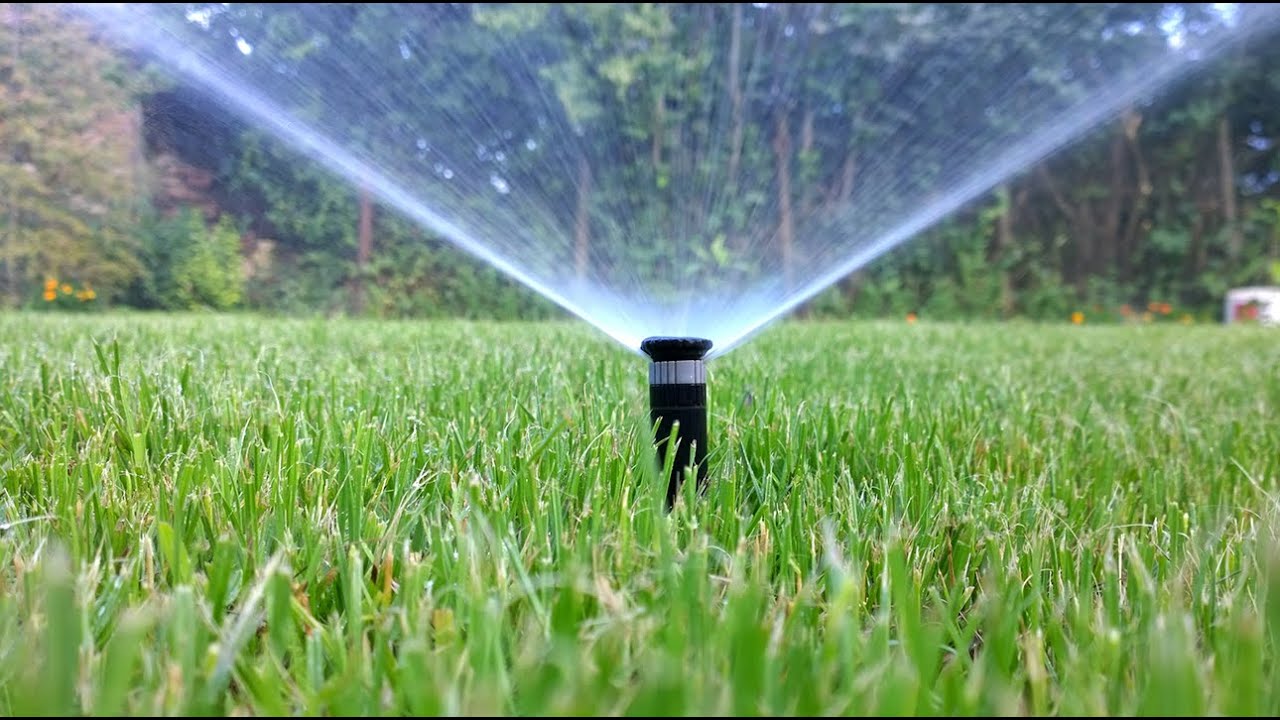Table of Contents
1. Introduction
Sprinkler irrigation is also called overhead irrigation. In this method of irrigation water is applied in the form of a spray or artificial rain.
Water is sprayed into the air and allowed to fall on the ground surface somewhat resembling rainfall.
The spray is developed by the flow of water under pressure through small orifices or nozzles. The pressure is usually obtained by pumping.
With careful selection of nozzle sizes, operating pressure and sprinkler spacing the amount of irrigation water required to refill the crop root zone can be applied nearly uniform at the rate to suit the infiltration rate of the soil.
2. Favourable Conditions For Sprinkler Irrigation
The following conditions are favourable for the sprinkler irrigation.
~ If the land is undulated, the sprinkler irrigation can be used, because it will be costly to level the land for the surface irrigation.
~ If the soil is very pervious, the sprinkler irrigation can be used, because it will be difficult to achieve good water distribution by the surface irrigation.
~ If the soil depth is shallow, the sprinkler may be used.
~ It can be used even for the lands having a steep slope or having an easily-erodible soil for which surface irrigation is not possible.
~ It can be used when the irrigation stream is too small to distribute water efficiently by surface irrigation.
~ It can be used when the land is to be brought into use in a short period.
~ It is suitable when the soil requires a light application of water at frequent intervals.
~ It is suitable for shallow-rooted crops.
~ It is suitable for effective fertilizer application and soil improvement.
~ It is suitable where well-trained and reliable labour is not available for surface irrigation.
3. Components of Sprinkler Irrigation
Sprinkler system usually consists of the following components:
i. A pump unit
ii. Tubings- main/sub mains and laterals
iii. Couplers
iv. Sprinkler head
v. Other accessories such as valves, bends, plugs and risers.
4. Classification of Sprinkler System
1. Permanent system:
It is a system in which both the mains & laterals are fixed.
2.Semi-permanent system:
Mains are permanently fixed and laterals are portable.
3. Portable system
The system in which main and laterals are both portables.
5. Advantages of Sprinkler Irrigation
~ Land preparation is not required.
~ Water efficiency is very high i.e. about 80%.
~ More land can be irrigated by less water.
~ Protects soil & crops from extreme weather conditions such as frost.
~ Uniform application of water.
~ Preservation of soil erosion.
~ Application of fertilizer can be done along with water.
~ Elimination of the channels for conveyance, therefore no conveyance loss.
~ Suitable to all types of soil except heavy clay.
~ Suitable for irrigation crops where the plant population per unit area is very high.
~ It is most suitable for oilseeds and other cereal and vegetable crops.
~ Water-saving.
~ Closer control of water application convenient for giving light and frequent irrigation and higher water application efficiency.
~ Increase in yield.
~ Mobility of the system.
~ May also be used for the undulating area.
~ Saves land as no bunds etc. are required.
~ Influences greater conducive micro-climate.
~ Areas located at a higher elevation than the source can be irrigated.
~ Possibility of using soluble fertilizers and chemicals.
6. Disadvantages of Sprinkler Irrigation
~ The initial cost is high.
~ There is an effect of pressure, during application
~ Not suitable for crops requiring a large depth of water.
~ Power is required for running pump.
~ Effect of wind.
~ The problem of clogging of the nozzle.
~ Good quality if the water is necessary.
~ Requires frequent supervision.
~ Requires continuous supply of water.
~ Not suitable for heavy soils.
~ Evaporation losses will be high in a place having high temperature and high wind speed.
| Read Also: Furrow Irrigation |


